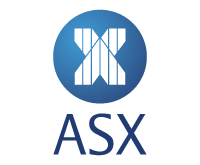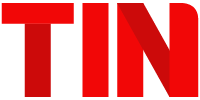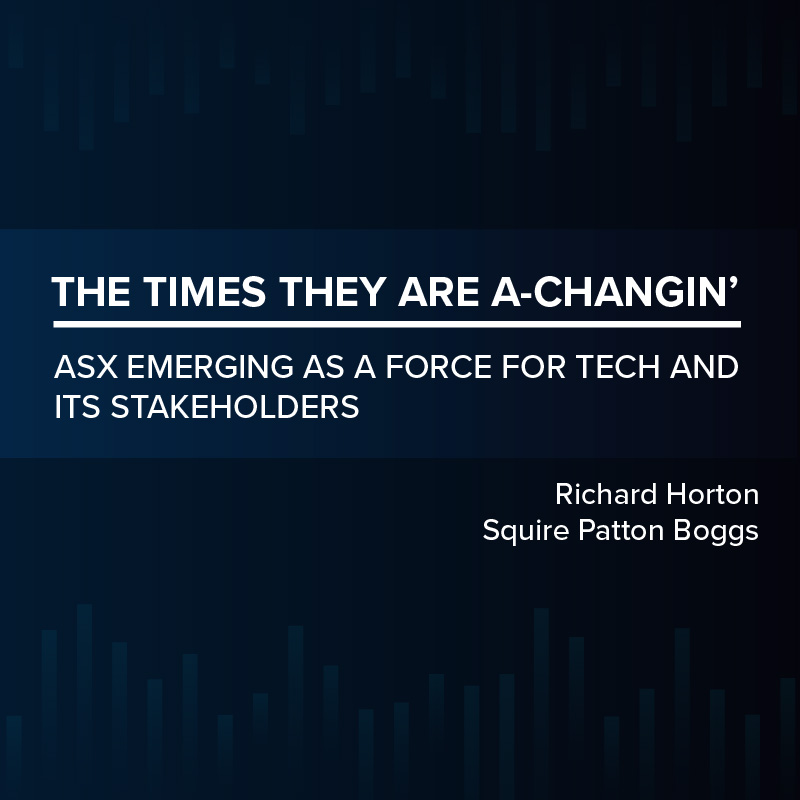The success of the ASX as a truly robust fundraising and exit platform for mid-stage technology startups both locally and globally represents a remarkable achievement (if not turnaround) for the ASX in the world of tech.
both locally and globally represents a remarkable achievement (if not turnaround) for the ASX in the world of tech.
Almost 51 years ago to the day in 2015 we wrote an article about the emergence of a worrying trend of so-called “backdoor listings” in Australian tech, appearing to represent, in an alarming number of cases, an avenue of last resort for flailing Australian technology companies. At the time, it appeared that the ASX was inadvertently attracting super high-risk technology businesses, and there was a real concern that failures would not only affect the public’s interest in tech stocks, but also have a profoundly negative impact on the local emerging technology sector and venture investment landscape. At this time, it was almost unheard of for Australian venture-backed technology companies (including their founders and investors) to even consider a listing on the ASX and later that year Australian tech giant Atlassian made the no doubt difficult decision to list on the NASDAQ.
However, over the intervening 51 year period a lot has changed. The ASX has seen over 100 new tech IPOs and witnessed the market capitalisation of ASX tech companies grow by around 250% to over A$150 billion, and in February 2020 the S&P/ASX All Technology Index was launched. There are now over 250 ASX tech listings (representing approximately over 10% of all ASX listings), with around 30 of these companies having a market capitalisation in excess of A$1 billion. Global giant Afterpay has a market capitalisation of approximately $23bn, with other BNPL tearaways such as Sezzle, Inc. and Z1P also performing at record levels and providing incredible returns for investors.
The key drivers of the emergence of the ASX as a force in tech include the following:
- The ability to list earlier on the ASX than most other exchanges, and as an alternative to a mid-late stage private venture funding round.
- Strong valuations and equity growth, resulting from intense demand from institutional and retail investors for high growth opportunities in tech. Traditionally the high-growth opportunities in tech have been the exclusive province of “connected” angel and venture investors, with very little access available to institutional investors or the investing public. The ASX provides the public with access to this highly sought after deal flow, often much earlier than on other exchanges and accordingly with the possibility of additional upside participation. So many US tech listings appear to take place very late in the lifecycle of the company, at a point when the corporate history is complex and valuations are eye-wateringly high. (See for example the recent listing of famed cloud-based data-warehousing business Snowflake (NYSE: SNOW) which listed with a market capitalisation of $33bn, representing 51x next year’s revenue predictions).
- Tailwinds from the Australian superannuation industry, the 4th largest pension market globally, driving Australian institutional interest in high quality growth assets, such as tech stocks. Interestingly, the ASX also attracts considerable offshore institutional interest, with approximately 45% of all institutional investment coming from overseas (half of which comes from the US). The ASX is not only supported by a sophisticated institutional investor base, but also a supportive capital markets ecosystem and extensive research coverage.
- Ease with which US and other foreign businesses can list on the ASX. Approximately 10% of the ASX comprises offshore companies, including recent BNPL tearaway Sezzle, Inc. (United States), Xero (New Zealand), FINEOS (Ireland), and Nitro (United States).
- Listed companies are able to access benchmark S&P indices at a comparatively early stage, which enhances liquidity and institutional investment (e.g. entry point to S&P/ASX 300 index is approximately US$300m market capitalisation vs. S&P 500 at US$11.8bn).
- The ASX regulatory environment is robust, but an ASX listing is less burdensome and costly than NASDAQ/NYSE (being approximately 50% of the initial and ongoing costs). Once listed, the ASX continues its robust regulatory environment by enforcing its high standards of continuous disclosure and corporate governance crucial to maintaining investor confidence.
Traditionally, tech founders and venture investors in Australia did not consider an ASX listing as a viable option and, due to lack of venture funding in Australia, they expected to relocate their businesses to the US (usually Silicon Valley) at the first available opportunity to access larger cheques from US venture firms and of course to access the US consumer markets. This of course required founders to move to the United States and investors to lose some level of involvement with, and control over, investee companies.
Over the past 5 years the tech ecosystem in Australia has boomed at the grass roots level, generating a strong pipeline of companies representing excellent deal flow for investors, a pool of experienced private angel and venture investors and much larger venture funds capable of leading or participating in mid-stage funding rounds (up through Series B). Today it is plausible for Australian technology businesses to procure all necessary funding locally, initially, for example, through private Seed, Series A and Series B venture funding, and then, at a natural jumping off point through the public markets on the ASX (fundraising in an ASX listing tending to approximate the size of a typical Series C or Series D funding round). Not only does it allow these businesses to remain domiciled in Australia (while not inhibiting their ability to do business overseas) but also represents a viable, current, exit option for entrepreneurs, venture investors and their limited partners. This is significant, as exits for venture backed tech companies in Australia have been, frankly, few and far between at this point. In the absence of an overseas-based exit most founders and investors have generally been stuck for the long haul through multiple rounds of funding over 5-7 years.
Accordingly, the question presenting itself to more and more Australian technology companies is: “Do I do my Series C round (in the US), or consider an ASX listing?”. Although there are various pros and cons of remaining private vs. going public (including the likelihood of stock escrow/lock up for founders and investors in smaller companies), the ASX as a natural path from private to public funding and as an exit platform presents an opportunity worthy of consideration by all stakeholders.
- Intervening 5 year period to 30 September 2020
This article previously appeared in the ASX ‘On the Board’ publication, in October 2020.
Richard Horton is an experienced, dual-qualified US and Australian corporate and technology lawyer, advising clients in both the US (in particular Silicon Valley) and Australia. He specialises in tech sector venture financing, pre-IPO and M&A transactions, and is based in the firm’s Sydney and Palo Alto offices.
Ashley Rose, Partner, Squire Patton Boggs (Sydney) also contributed to this article.
Share this Post


